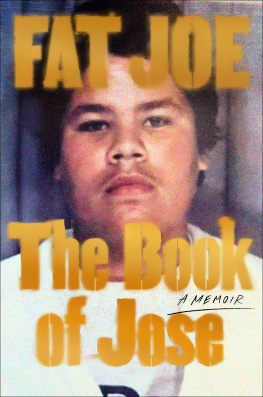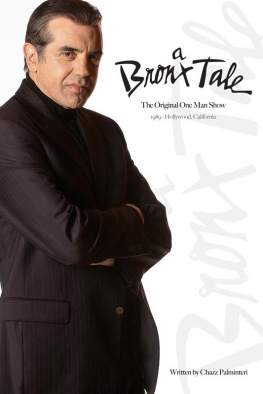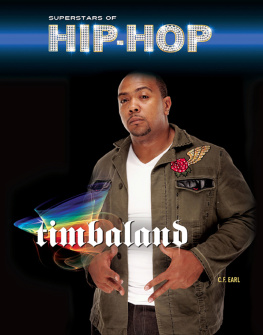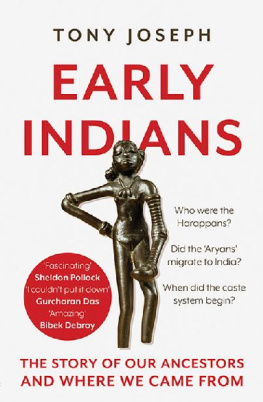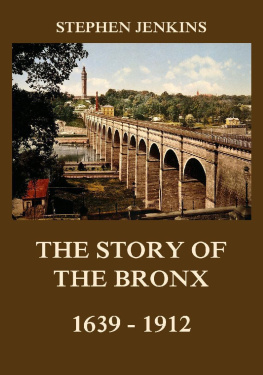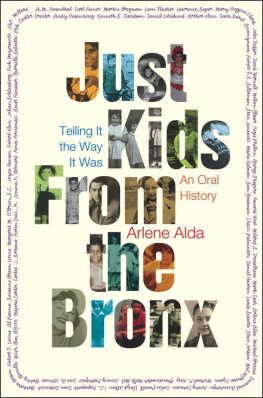This book was published with the assistance of the Authors Fund of the University of North Carolina Press.
2017 THE UNIVERSITY OF NORTH CAROLINA PRESS
All rights reserved. Designed by Sally Fry Scruggs and set in Utopia and Univers types by codeMantra. Manufactured in the United States of America. The University of North Carolina Press has been a member of the Green Press Initiative since 2003.
Cover illustration: DJ Ed at the PAL Lynch Center block party, summer of 1980. Photo by Ricky Flores.
Library of Congress Cataloging-in-Publication Data
Names: Ewoodzie, Joseph C., Jr, author.
Title: Break beats in the Bronx : rediscovering hip-hops early years / Joseph C. Ewoodzie Jr.
Description: Chapel Hill : The University of North Carolina Press, [2017] | Includes bibliographical references and index.
Identifiers: LCCN 2016053760 | ISBN 9781469632742 (cloth : alk. paper) | ISBN 9781469632759 (pbk : alk. paper) | ISBN 9781469632766 (ebook)
Subjects: LCSH: Rap (Music)New York (State)New YorkHistory and criticism. | Hip-hopNew York (State)New YorkHistory. | Bronx (New York, N.Y.)Social life and customs20th century.
Classification: LCC ML3531 .E96 2017 | DDC 782.42164909747/275dc23
LC record available at https://lccn.loc.gov/2016053760
Figures and Table
FIGURES
1.1. DJ Kool Herc party flier
1.2. Causes and Consequences of Concentrated Poverty
1.3. Neighborhoods of the Bronx, ca. 1940
1.4. Urban decay in the South Bronx
1.5. Robert Moses with Mayor Robert Wagner and Frank Meistrell, 1956
1.6. South Bronx teen taking part in neighborhood cleanup
1.7. Taki 183 spray painting his tag
1.8. Tony Tone and DJ Kool Herc
2.1. Afrika Bambaataa
2.2. Grandmaster Flash
2.3. The Intersection of Graffiti-Writing, Breaking, and DJing
3.1. The Inclusion of MCing
3.2. Park Jam in the Bronx
3.3. The Inclusion of the Making and Selling of Tapes
4.1. The crowd at an Indoor Jam
4.2. Flier advertising a Breakout and Baron performance, the L Brothers
4.3. Flier advertising Caz, Wiz, and Bambaataa
4.4. The Inclusion of Fashion and Routines
4.5. The Inclusion of Fliers
5.1. The Mercedes Ladies
5.2. DJ Charlie Chase and Grandmaster Caz
5.3. Samples of fliers advertising various crews
5.4. Almighty Kay Gee, Jerry Dee Lewis (JDL), Easy AD, and Grandmaster Caz
5.5. Tony Tone and his mother
5.6. Overlap of Black and Puerto Rican Life in the South Bronx during the 1970s
6.1. DJing and MCing as the Central Activities
TABLE
3.1. Sources of Conventions and Modes of Influence
Introduction
So, when did you fall in love with hip-hop?
My father, my brother, and I were on our way to my aunts house in the South Bronx, on Fox Street and Westchester Avenue. It was 1999. I knew very little about the Bronx. Since emigrating to the United States from Ghana only a few years earlier, all I had heard about the Bronx was that it was mean and dangerous. According to my friends in Canton, Illinois, the small, Midwestern town in which I had been living, it was the ghetto. My father drove us down Westchester Avenue in our sky-blue Ford Windstar; we rode slowly in the narrow lane between the rusty steel pillars holding up the tracks of the 2 Train above us. Sitting in the back, I took in the bustle and commotion on the street. Teenagers wearing headphones, old men walking with canes, and young women pushing strollers made their way through the heavy traffic, unafraid of the vehicles that passed so closely by them. Horns honked from cars and buses and music blared from speakers on the sidewalks, as folks who were not selling or buying something hurried to where they were going.
The radio in our van was tuned to Hot 97, New York Citys premier hip-hop station during the late 90s. We were not listening because we were fans of the music but because my father was trying to immerse us in the sounds of our new urban surroundings. Mesmerized by all that was happening outside our van, I was only half paying attention when, after a commercial break, the shows host Angie Martinez, introduced the next song. She must have mentioned the title, the artists, and maybe even the producer of the song, but I missed all that. All I heard were whirring sounds of helicopter blades. I turned to look up, but the only thing above us was the racing train. And then I heard what sounded like a man talking on a phone. I started to pay closer attention and realized the sounds were coming from the radio. The next few seconds were sounds of aggressive, guitar-like synthesizer. Then, just as the man on the phone hung up, pulsating drum kicks and snares dropped in. Simultaneously, another mans voice shouted, WHAT WHAT WHAT WHAT WHAT, while a womans voice smoothly sang the same word. I turned my gaze from the street to the car radio and looked to see if my dad and brother were listening, but they were oblivious, absorbed by the world outside. Using the remote control in the back seat, I turned up the volume a couple of notches. The first verse began,
Ay yo! We light a candle,
Run laps around the English Channel,
Neptunes, I got a cockerspaniel.
The words made no sense to me, but I was engrossed, especially by how the rhythmic delivery of the spoken words synchronically danced with the instrumentals.
It was not the first time I had heard hip-hop, but this was the first time I noticed it. It was when I fell in love with hip-hop. As the song continued, I thought to myself, How did they come up with this? Who thought to place words, poetry really, perfectly onto musical instrumentation this way? How did they get all the different sounds to work together so well? And how, where, and when did this happen? At that moment, while riding in my family van, I did not realize the answers to my questions lay just outside the vans windows. I did not know that the South Bronx, the very place where I first took notice of it, was hip-hops birthplace. I did not know that one of the founding figures of hip-hop had grown up just down the street from my aunts house.
Nearly two decades after first hearing Noreagas Super Thug, I am still intrigued by the way hip-hop started. My objective in this book is to tell, or better yet retell, the story of how it began. Several scholars, in various fashions, have taken on this task, but as Jeff Chang writes, There are many more versions of the story to be heard.other city for that matter? Why did it begin with Kool DJ Herc? In addition to Kool Herc, Afrika Bambaataa, and Grandmaster Flashthe Holy Trinity of hip-hopwho else was involved? Furthermore, how did hip-hops conventions develop? What impact did African American cultural traditions have on the music form? Was the Black Arts Movement, for example, necessary to its rise? Break Beats in the Bronx answers these and many other questions about hip-hops beginnings.
Providing new empirical details, this book also unearths what occurred during a crucial span of time that has been surprisingly underexamined in previous studies: the years between 1975 and 1979. I argue that during this period the internal logic of the hip-hop scene was formed. To clarify how this internal logic coalesced, I rely on insights from the sociology of culture, especially contemporary scholarship on symbolic boundaries.
The book is divided into three parts, each comprising two chapters. Part I retells stories that are, for the most part, familiar to historians of hip-hop, with the objective of explaining what is often taken for granted. Chapter 1 addresses why hip-hop began with Kool DJ Herc. The second chapter investigates how Afrika Bambaataa and Grandmaster Flash entered the DJing world in the Bronx and how they shaped and distinguished that music scene from those in other parts of New York City. It also looks at DJing in Harlem, Queens, and Brooklyn and explores what made these scenes different from the one in the Bronx. The main objective, however, is to determine why hip-hop started in the Bronx and not in any other part of the city. Chapter 2s analysis of why hip-hop started in the Bronx rather than another part of the city traces the emergence of a new social and cultural entity.


